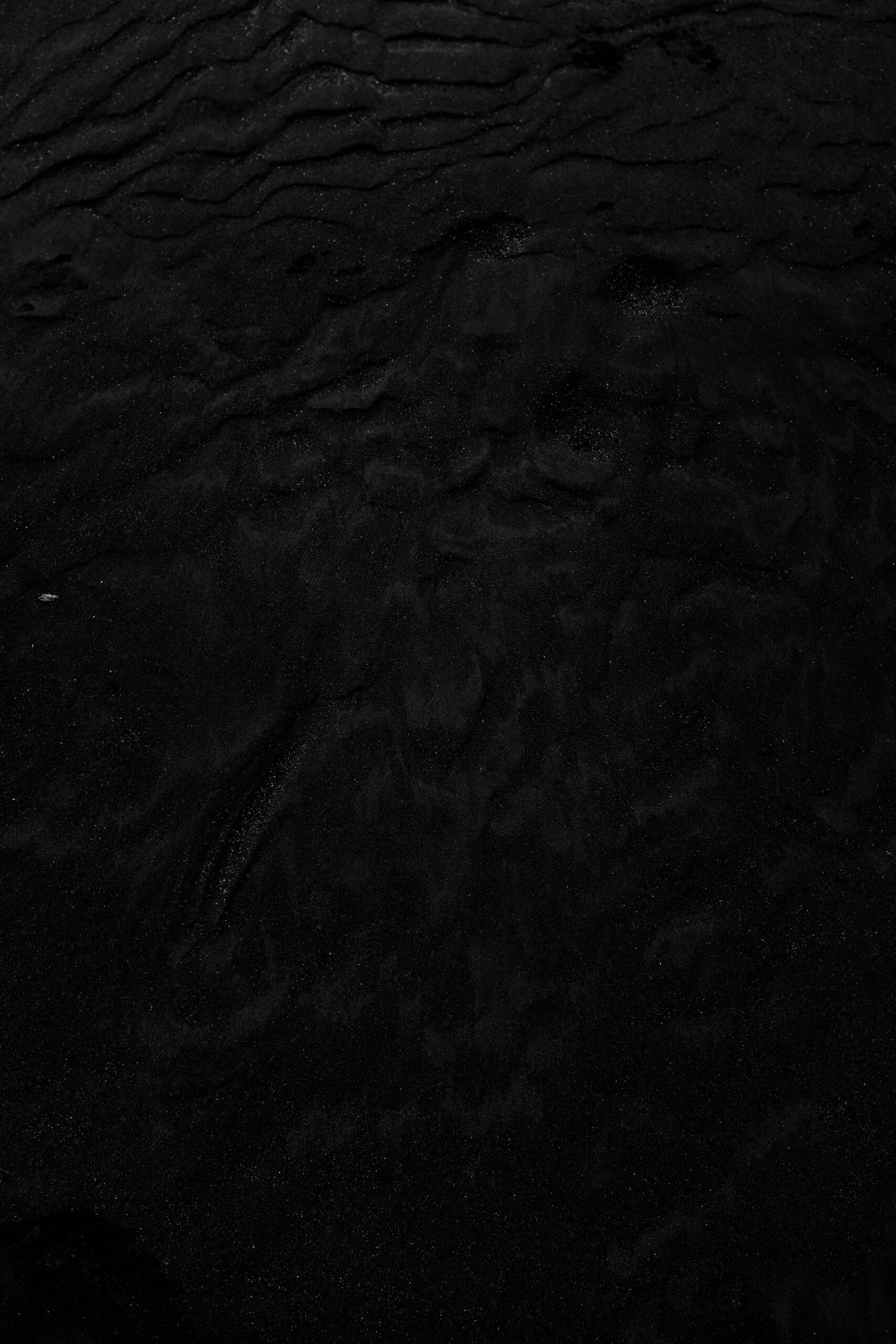Have you noticed your succulent plant taking on a rather concerning black hue? Don’t fret just yet! Why Is My Succulent Turning Black? In this article, we’ll shed light on why your beloved succulent may be turning black and provide you with some simple solutions to revive its vibrant green appearance. By understanding the possible causes behind this color transformation, you’ll be equipped with the knowledge needed to take better care of your succulent and ensure its continued health and vibrancy. So, let’s dig in and uncover the mysteries behind the blackening of succulents!
1. Environmental Factors
1.1 Sunburn
One of the common reasons why your succulent may be turning black is sunburn. Succulents are adapted to thrive in bright sunlight, but excessive exposure to intense sunlight can cause damage to their leaves. This can result in the leaves turning black or brown. To prevent sunburn, it’s important to gradually acclimate your succulent to direct sunlight by increasing the exposure gradually over a period of time. Providing some shade during the hottest part of the day can also help protect your succulent from sunburn.
1.2 Cold Temperature
Another environmental factor that can cause your succulent to turn black is exposure to cold temperatures. Succulents are typically adapted to warm and arid climates, and they are sensitive to extreme cold. When exposed to freezing temperatures, the cells in the leaves may rupture, resulting in darkening or blackening of the affected areas. It’s important to protect your succulents from frost by bringing them indoors or providing them with adequate insulation during freezing weather.
1.3 Heat Stress
While succulents are known for their ability to tolerate high temperatures, excessive heat can also be detrimental to their health. Heat stress can cause the leaves to darken or turn black. This can occur if your succulent is exposed to extremely high temperatures for extended periods of time without any protection. Providing shade during the hottest part of the day and ensuring proper ventilation can help prevent heat stress in your succulents.
1.4 Overexposure to Artificial Light
Although succulents require sufficient light to thrive, overexposure to artificial light can also lead to leaf discoloration and blackening. If your succulent is placed too close to artificial light sources, such as grow lights or fluorescent lamps, it can result in the leaves becoming scorched and turning black. It’s important to provide your succulent with the right amount of artificial light and ensure that the light source is not too intense or direct.
2. Watering Issues
2.1 Overwatering
Overwatering is a common issue that can lead to your succulent turning black. Succulents have adapted to survive in dry conditions and have specialized water-storage tissues in their leaves and stems. When they are exposed to excessive moisture, their roots can become waterlogged, leading to root rot. The blackening of the leaves is often a sign of this condition. To prevent overwatering, make sure to allow the soil to dry out completely before watering again. It’s important to provide well-draining soil and avoid overwatering, especially during the colder months when succulents are in their dormant phase.
2.2 Underwatering
On the other hand, underwatering can also cause your succulent to turn black. When a succulent doesn’t receive enough water, its leaves can become dehydrated and eventually turn black or brown. It’s essential to water your succulent thoroughly when the soil is completely dry, ensuring that the water reaches the roots. However, it’s important to strike a balance and not overwater or underwater your succulent, as both extremes can lead to blackening of the leaves.
2.3 Poor Drainage
Poor drainage can contribute to both overwatering and underwatering problems for your succulent. When the soil doesn’t drain properly, water can accumulate around the roots, leading to root rot and blackening of the leaves. It is crucial to choose a well-draining potting medium and a container with drainage holes to ensure excess water can escape. Additionally, avoid overfilling the saucer or tray underneath the pot to prevent the succulent from sitting in water for prolonged periods.

3. Pests and Diseases
3.1 Mealybugs
Mealybugs are common pests that can infest succulents and cause blackening of the leaves. These small, white insects are often found in the protected areas of the plant, such as leaf axils or along the stem. They feed on the sap of the succulent, which weakens the plant and leads to discoloration. To treat a mealybug infestation, gently wipe the affected areas with a cotton swab dipped in rubbing alcohol or use a natural insecticidal soap. Regularly inspect your succulents for signs of pests to catch infestations early.
3.2 Spider Mites
Spider mites are another common pest that can cause blackening of succulent leaves. These tiny pests create fine webbing on the leaves and suck the sap from the plant, causing it to weaken and the leaves to turn black or brown. To control spider mite infestations, you can try using neem oil or insecticidal soap. It’s important to catch and treat spider mites early to prevent further damage to your succulent.
3.3 Fungal Infections
Fungal infections can also result in the blackening of succulent leaves. This can occur when the succulent is exposed to moist conditions for an extended period, such as in humid environments or overwatering. Fungal infections can cause rotting of the leaves or other parts of the plant, leading to blackening. To prevent fungal infections, ensure proper ventilation and avoid overwatering. If your succulent does develop a fungal infection, remove the affected parts and apply a fungicide as recommended.
3.4 Bacterial Infections
Bacterial infections can also affect succulents and cause blackening of the leaves. These infections can result from injuries to the plant, such as cuts or punctures, which allow bacteria to enter and multiply. Bacterial infections often lead to rotting of the affected area and blackening of the leaves. To prevent bacterial infections, it’s important to handle your succulent with care and avoid causing any damage. If you notice signs of a bacterial infection, remove the affected parts and apply a suitable antibacterial treatment.
4. Nutritional Deficiencies
4.1 Lack of Sunlight
A lack of sunlight can cause your succulent’s leaves to turn black. Sunlight is vital for photosynthesis, which is the process by which plants convert sunlight into energy. Without enough sunlight, succulents may not be able to produce enough energy, leading to weak and blackened leaves. To prevent this, ensure your succulent is placed in a location where it can receive adequate sunlight, especially if it is an outdoor succulent. If you have an indoor succulent, consider providing supplemental artificial light to make up for the lack of natural sunlight.
4.2 Nitrogen Deficiency
A deficiency in nitrogen can also cause succulent leaves to turn black. Nitrogen is a critical nutrient that succulents need for healthy growth and development. When nitrogen levels are low, the plant may not be able to produce sufficient chlorophyll, resulting in darkened or blackened leaves. To address a nitrogen deficiency, you can use a balanced fertilizer specifically formulated for succulents. Follow the instructions on the fertilizer package carefully to avoid overfertilizing and causing other issues.
4.3 Iron Deficiency
Iron deficiency can manifest in succulent leaves turning black or purple. Iron is essential for the production of chlorophyll, and without it, the leaves may darken. To address an iron deficiency, you can use an iron chelate fertilizer or apply iron-rich amendments, such as liquid iron supplements. It’s important to follow the recommended dosage to avoid overfertilization, which can lead to other problems.
4.4 Imbalanced Soil pH
An imbalanced soil pH can affect nutrient availability and result in succulent leaves turning black. Succulents typically prefer slightly acidic to neutral soil pH levels. If the soil pH is too high or too low, certain nutrients may become inaccessible to the plant, leading to deficiencies and leaf blackening. It’s essential to test the soil pH and adjust it if necessary using suitable amendments to maintain optimal conditions for your succulent.
4.5 Lack of Micronutrients
In addition to nitrogen and iron, succulents require various micronutrients in small quantities for healthy growth. Micronutrients, such as magnesium, manganese, zinc, and copper, play essential roles in metabolic processes and overall plant health. A lack of these micronutrients can cause leaf blackening and other nutrient deficiency symptoms. To ensure your succulent receives adequate micronutrients, consider using a balanced fertilizer specifically formulated for succulents or applying micronutrient-rich amendments as recommended.

5. Root Problems
5.1 Root Rot
Root rot is a common root problem that can lead to blackening of succulents. It occurs when the roots are consistently exposed to excess moisture, leading to fungal or bacterial infections that rot the roots. As the root system becomes damaged, the succulent may show signs of leaf blackening and general decline. To prevent root rot, it’s important to provide well-draining soil, avoid overwatering, and ensure proper ventilation. If root rot occurs, it’s essential to remove the affected parts and replant your succulent in fresh, well-draining soil.
5.2 Root Bound
If your succulent has been growing in the same pot for an extended period without repotting, it may become root bound. When the roots become cramped and overcrowded, they can start to encircle themselves, leading to nutrient deficiencies and limited water absorption. As a result, the leaves may turn black or show other signs of stress. To address this issue, carefully repot your succulent in a larger container, providing sufficient space for the roots to grow and access nutrients and water.
5.3 Damage to the Root System
Any damage to the root system of your succulent can have adverse effects, including blackening of the leaves. This damage can occur during repotting, when the roots are accidentally injured, or from external factors like pests or diseases. It’s important to handle your succulent’s roots with care and avoid causing any damage. If you notice signs of root damage, such as blackening or rotting roots, it’s crucial to address the issue promptly. Remove any damaged roots and provide appropriate care and treatment to promote root healing.
6. Overfertilization
6.1 Excessive Nitrogen
While nitrogen is essential for your succulent’s growth, overfertilizing with nitrogen-rich fertilizers can lead to leaf blackening. Excessive nitrogen can disrupt the delicate balance of nutrients, causing nutrient imbalances and resulting in blackened leaves. It’s important to follow the recommended dosage on the fertilizer package and avoid overfertilizing your succulent. Using a balanced fertilizer specifically formulated for succulents can help prevent overfertilization and promote healthy growth.
6.2 Chemical Burn
Applying too much fertilizer or using a fertilizer high in salts can also cause a chemical burn on your succulent’s leaves, leading to blackening. When salts build up in the soil, they can draw moisture away from the plant, causing dehydration and damage. To prevent chemical burn, it’s important to dilute the fertilizer according to the instructions and avoid applying it to dry soil. Additionally, flushing the soil periodically to remove excess salts can help prevent salt buildup and minimize the risk of chemical burn.

7. Natural Aging Process
7.1 Senescence
As succulents age, it is natural for older leaves to die off and turn black. This is part of the plant’s senescence or aging process. As new growth emerges, older leaves may no longer receive sufficient nutrients and energy, causing them to die and darken. While this is a normal occurrence, it’s important to differentiate between natural aging and other issues that may cause leaf blackening. Regularly removing the dead leaves can help keep your succulent healthy and aesthetically pleasing.
7.2 Dying Lower Leaves
In addition to senescence, dying lower leaves can indicate nutrient deficiencies or other underlying issues. When a succulent is lacking essential nutrients, it may reabsorb nutrients from the older, lower leaves, leading to their death and eventual blackening. It’s important to address any nutrient deficiencies by providing the necessary fertilizers and maintaining a balanced soil pH. Additionally, properly watering and ensuring sufficient light conditions can help promote healthy leaf growth and prevent the premature death of lower leaves.
7.3 Shedding Older Growth
Succulents may also shed their older growth as part of their natural growth cycle. This shedding can be observed as the lower leaves turning black and dropping off. Shedding older growth allows the plant to redirect its resources towards new growth and ensures optimal health and vitality. As this is a normal process, there is usually no cause for concern. However, if you notice excessive leaf shedding or other signs of stress, it’s important to evaluate the overall care and conditions provided for your succulent.
8. Inadequate Lighting Conditions
8.1 Insufficient Natural Light
Insufficient natural light can cause your succulent’s leaves to turn black. Succulents typically require bright, indirect sunlight to thrive. If your succulent is placed in a location with insufficient natural light, it may not receive enough energy to maintain healthy leaf coloration, resulting in blackening. To address this issue, consider relocating your succulent to a spot where it can receive more natural light. If indoor lighting alone is not sufficient, you may need to supplement with artificial grow lights to provide the adequate light levels your succulent needs.
8.2 Insufficient Artificial Light
In the case of indoor succulents, insufficient artificial light can also lead to leaf blackening. If your succulent is not receiving enough light from artificial sources, such as grow lights or fluorescent lamps, it can negatively impact its leaf health. It’s important to ensure that the artificial light source is suitable for succulents and provides the right intensity and duration. Adjusting the distance between the light source and the plant, as well as the duration of light exposure, can help prevent leaf blackening caused by insufficient artificial light.
9. Overcrowding and Competition
9.1 Lack of Space
Overcrowding can be detrimental to succulents and can lead to leaf blackening. When succulents are planted too closely together, they compete for light, nutrients, and water. This competition can result in nutrient deficiencies and limited access to resources, causing stress and blackening of the leaves. To prevent overcrowding, ensure that your succulents have ample space to grow and thrive. If needed, repot or separate crowded plants to provide them with enough room to fully develop and access necessary resources.
9.2 Competition for Nutrients and Water
Competition among succulents for nutrients and water can also contribute to leaf blackening. When multiple succulents are planted together in the same pot or container, their root systems may intertwine and compete for limited resources. This competition can lead to nutrient deficiencies and inadequate water absorption, resulting in leaf discoloration. To address this issue, it’s important to choose an appropriate pot size that allows each succulent to have sufficient space for their roots to grow and access resources independently.
10. Inappropriate Potting Medium
10.1 Poor Drainage
Using a potting medium with poor drainage can lead to various problems for your succulent, including leaf blackening. If the soil does not drain well, excess water can accumulate around the roots, causing root rot and leaf discoloration. It’s crucial to use a well-draining potting medium specifically formulated for succulents. These potting mixes often include materials like coarse sand or perlite to promote proper drainage and allow excess water to escape. Good drainage is essential to maintain the overall health of your succulent.
10.2 Wrong Soil Composition
In addition to drainage, the composition of the potting medium can affect your succulent’s leaf coloration. Succulents generally prefer a lean, well-aerated soil that promotes root health. Using the wrong soil composition, such as one that retains too much moisture or is overly compacted, can lead to nutrient imbalances and poor root function. This can result in blackening of the leaves. It’s important to choose a suitable succulent potting mix or create your own by combining well-draining components like perlite, sand, and organic matter, such as coconut coir or compost.
In conclusion, there are numerous factors that can cause your succulent’s leaves to turn black. These factors include environmental conditions like sunburn and cold temperatures, watering issues such as overwatering and poor drainage, pests and diseases, nutritional deficiencies, root problems, overfertilization, the natural aging process, inadequate lighting conditions, overcrowding and competition, and the use of an inappropriate potting medium. By understanding these factors and addressing them appropriately through proper care and maintenance, you can help ensure the health and vibrancy of your succulent. Remember to monitor your succulent’s condition regularly, provide the necessary resources, and make adjustments as needed to prevent and address leaf blackening. With proper care, your succulent can thrive and bring beauty to your space for years to come.


